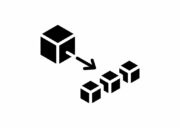
What Is Kubernetes Cost Optimization?
Kubernetes cost optimization involves reducing expenses associated with running applications in Kubernetes environments without compromising performance or availability. It requires a strategic approach to managing resources such as compute, storage, and networking. By optimizing these elements, organizations can ensure they only pay for what they actually use and need, avoiding unnecessary expenses.
Cost optimization techniques in Kubernetes include rightsizing pods, selecting appropriate instance types for workloads, implementing auto-scaling, and setting resource quotas. The goal is to strike a balance between cost savings and maintaining application performance. This requires continuous monitoring and adjustment to adapt to changing demands.
Why Should Developers Care About Kubernetes Cost?
Cost efficiency directly impacts an organization’s bottom line. By optimizing resource usage, developers can significantly reduce the operational expenses associated with running Kubernetes clusters. This is particularly important for startups and small to medium-sized enterprises that must carefully manage their budgets. Efficient cost management allows these organizations to allocate more resources to innovation and growth rather than infrastructure overhead.
Additionally, developers are often responsible for ensuring the performance and reliability of their applications. Inefficient use of resources can lead to performance issues and service disruptions. By focusing on cost optimization, developers can ensure that applications run smoothly within the allocated budget, thereby maintaining high performance and availability. This balance between cost and performance is vital for delivering a consistent user experience and meeting service level agreements (SLAs).
Recommended Article: All about Kubernetes Helm
Breakdown of Key Cost Drivers in Kubernetes
Here are some of the main elements that can drive up costs in Kubernetes.
Compute Resources
The primary compute resources in Kubernetes are the CPU and memory allocated to run applications. When applications are deployed in a Kubernetes cluster, each pod requires a certain amount of CPU and memory to function. If these resources are over-allocated, meaning that more CPU and memory are assigned than what is needed, it leads to resource wastage.
Under-allocation, where insufficient CPU and memory are assigned, can cause performance issues, application crashes, and service disruptions. This can indirectly increase costs as a result of downtime and the need for urgent scaling to address performance deficits. Other factors influencing costs include the instance type (on-demand, reserved, or spot) and the geographical location of the compute resources.
Storage
Storage costs in Kubernetes arise from the use of persistent volumes (PVs) that applications rely on for data storage. Over-provisioning storage means allocating more storage capacity than is needed, paying for unused space. Under-provisioning storage can result in application failures when the storage capacity is exhausted, requiring often expensive interventions.
Storage costs also vary based on the type of storage used, such as standard hard disk drives (HDDs), solid-state drives (SSDs), or cloud-based storage solutions. The frequency and volume of data access and the location of storage resources can also affect storage costs.
Networking
Networking costs in Kubernetes can be substantial due to the high volume of data traffic and the complexity of network architectures. These costs include data transfer between nodes within the same cluster, across different clusters, and between the cluster and external services. High internal traffic, especially in clusters with numerous microservices, can increase costs.
External data transfers, such as communication with external databases, APIs, or other services, can incur additional costs. Networking components like ingress controllers, load balancers, and virtual private network (VPN) gateways further add to the cost. The geographical distribution of nodes and clusters can also influence networking costs.
Kubernetes Cost Optimization Tips for Developers
Here are some of the ways that developers can ensure optimal spending in Kubernetes.
Design a Cost-Effective Architecture
Developers should adopt microservices and serverless patterns that allow for the granular scaling of components. By breaking down applications into smaller, independently scalable services, developers can ensure that each component uses only the necessary amount of resources. This improves resource utilization and avoids over-provisioning.
Another measure is Incorporating stateless applications wherever possible. These apps can be easily scaled up or down without worrying about data persistence. Managed cloud-native services for databases, caching, and queuing can offload responsibilities from Kubernetes clusters, allowing developers to focus on optimizing application performance and cost.
Implement Resource Management Strategies
Resource management in Kubernetes involves setting appropriate resource requests and limits for pods. By accurately specifying the minimum CPU and memory that a pod needs (requests) and the maximum resources it is allowed to consume (limits), developers can prevent resource contention and ensure stable performance across all applications.
It’s also useful to implement Quality of Service (QoS) policies. Kubernetes uses QoS classes to make decisions about scheduling and evicting pods. By categorizing pods based on importance and resource requirements, developers can prioritize critical services, ensuring they receive the resources they need while less critical applications can be scaled down or terminated.
Optimize the Cluster Configuration
Optimizing the cluster configuration involves selecting the right mix of nodes based on the workload requirements—balancing between on-demand and reserved instances to match predictable and variable workloads. Using autoscaling for nodes can adjust the cluster size dynamically, ensuring that resources are scaled up during high-demand periods and scaled down when demand decreases.
Organizations should implement multi-tenancy where possible. By securely isolating different workloads or teams within a single Kubernetes cluster, organizations can maximize resource utilization and minimize overhead costs associated with running multiple clusters. Developers must regularly review and update cluster configurations to leverage newer, more cost-effective instance types or services offered by cloud providers.
Ensure Efficient Storage Management
One way to manage storage in Kubernetes is to use persistent volumes (PVs) and persistent volume claims (PVCs) to ensure applications have access to the storage resources they require without over-provisioning. By matching PVC requests with the appropriate PVs, developers can optimize storage utilization and cost.
Implementing dynamic provisioning through Storage Classes automates the process of creating and assigning storage resources based on current needs, reducing manual overhead. Data deduplication and compression techniques minimize the amount of physical storage needed by eliminating redundant data and reducing the size of stored data. Tiered storage strategies automatically move less frequently accessed data to cheaper storage options.
Use Progressive Deployment Strategies
Strategies such as rolling updates, blue-green deployments, and canary releases allow for seamless application updates with minimal downtime. Rolling updates gradually replace old versions of pods with new ones, minimizing resource overhead by only scaling up what’s necessary for the update. Blue-green deployments run two identical environments, switching traffic from one to the other once the new version is fully operational, enabling quick rollbacks.
Canary releases enable the deployment of new features to a small subset of users initially. This allows developers to monitor performance and user feedback without fully committing resources to the new version. If issues arise, it’s simpler and less costly to rollback changes.
Use Kubernetes Cost Management Tools
Kubernetes cost management tools provide insights into resource usage and costs, enabling developers to identify inefficiencies and overspending. By leveraging features such as cost allocation, budget tracking, and expense forecasting, teams can make data-driven decisions to adjust resource allocations and reduce expenditures.
Tools like Kubecost, CloudHealth by VMware, or the native cost management solutions offered by cloud providers can integrate with Kubernetes environments, offering visibility into each component’s cost impact. They can alert teams to overuse or inefficient resource deployment and support chargeback and showback models, allowing organizations to attribute costs accurately across departments or projects.
Conclusion
Kubernetes cost optimization is a continuous process of monitoring, analyzing, and adjusting resource allocations to align with changing demands and workload characteristics. By applying the strategies discussed here, developers and organizations can significantly reduce their Kubernetes operational costs. As Kubernetes continues to evolve, staying informed about the latest features and best practices for cost optimization will be crucial.




